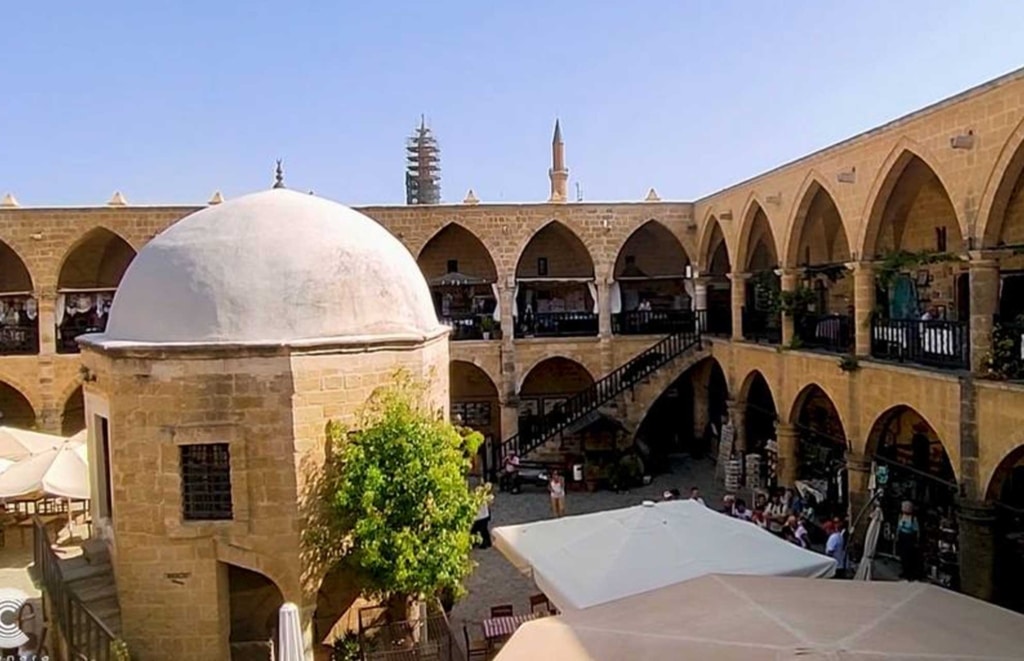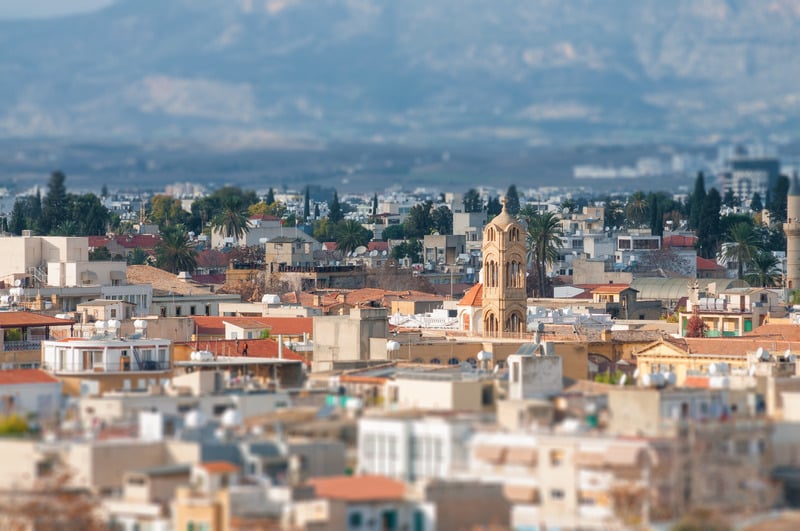Nicosia is the capital of both North Cyprus and the Republic of Cyprus. It is located near the center of the Mesaoria Plain, on the banks of the Pedieos River. Nicosia is the largest city on the island of Cyprus and has been continuously inhabited for over 4,500 years. The city has a rich and complex history, having been ruled by a number of different empires over the centuries, including the Greeks, Romans, Byzantines, Venetians, Ottomans, and British. pen_spark
A Brief History of Nicosia, North Cyprus
Nicosia was founded in the 7th century BC by the Greeks. The city was conquered by the Romans in 58 BC and became an important center of Roman culture and administration. After the fall of the Roman Empire, Nicosia was ruled by the Byzantines, who built a massive wall around the city to protect it from invaders. In 1191, Nicosia was captured by the Crusaders, who held the city for over 300 years. In 1489, Nicosia was conquered by the Venetians, who ruled the city for over 200 years. In 1571, Nicosia was captured by the Ottomans, who ruled the city for over 300 years. In 1878, Cyprus was placed under British administration. In 1960, Cyprus gained independence from the United Kingdom and became a republic. However, the island was soon divided between the Greek and Turkish Cypriot communities. In 1974, Turkey invaded Cyprus and occupied the northern part of the island. Nicosia has been a divided city ever since.
spectacular attractions of Nicosia
Despite its troubled history, Nicosia is a vibrant and cosmopolitan city with a lot to offer visitors. The city is home to a number of historical and cultural attractions, including:
- The Venetian Walls:The Venetian Walls are a UNESCO World Heritage Site and are one of the most popular tourist attractions in Nicosia. The walls were built in the 16th century by the Venetians to protect the city from invaders. Today, the walls are a popular spot for walking, jogging, and cycling.
- The Venetian Column: In the old town of Lefkoşa (Nicosia), you’ll come across a square featuring a 7-meter tall column. This column was transferred to Nicosia in 1489 during the Venetian rule, originally brought from the ancient city of Salamis. Because the Venetians moved it, it became known as the “Venetian Column.” Later, during the Ottoman period, the column was relocated once again, this time to Atatürk Square. Before the Ottomans, in 1915, the British made modifications to the column, removing the stone lion that once stood on top and replacing it with a stone globe. For the Venetians, this column symbolized power and grandeur, and it remains one of Nicosia’s important historical landmarks. The Venetian Column, with its long history and various transformations over the centuries, stands as a symbol of the city’s rich cultural heritage and remains a popular attraction in the old town of Lefkoşa.

- The Selimiye Mosque:The Selimiye Mosque was originally built as a Catholic cathedral in the 13th century. However, after the Ottoman conquest of Nicosia in 1571, the cathedral was converted into a mosque. The Selimiye Mosque is one of the largest mosques in Cyprus and is a stunning example of Ottoman architecture.
- The Büyük Han:In the historic old town of Lefkoşa (Nicosia), you’ll find the largest and most beautiful caravanserai in Northern Cyprus, known as “Büyük Han.” This caravanserai was built in 1572, just one year after the Ottomans reclaimed the region from the Venetians. Muzaffer Pasha, the first Ottoman governor of Cyprus, commissioned the construction of Büyük Han, inspired by a similar building in Bursa. However, one archaeologist believes that the building was completed by Muzaffer Pasha’s successor. Muzaffer Pasha requested architects from Constantinople to oversee the construction of the caravanserai.Initially, the structure was called “The New Inn” (Yeni Han), and later it became known as “Alanya Inn.” In the 17th century, it was renamed “Büyük Han” (The Great Inn). When the British took control of Cyprus in 1878, they converted the caravanserai into a prison, where it functioned as such for 11 years.

- The Cyprus Museum:The Cyprus Museum is the largest and most important museum in Cyprus. The museum houses a collection of artifacts that span over 10,000 years of Cypriot history.
- Arab Ahmet Mosque: Located in the heart of Nicosia, North Cyprus, the Arab Ahmet Mosque is one of the city’s most significant historical landmarks. The mosque was named after a prominent Ottoman commander in the 16th century and is renowned for its classic Ottoman architecture. Arab Ahmet Mosque is unique in that it is the only Turkish mosque on the island, featuring a simple yet elegant design that sets it apart from other religious buildings. Before the mosque was built, the site was home to an old church, which was demolished during the construction of the mosque. One of the most distinctive features of Arab Ahmet Mosque is the presence of historical tombstones dating back to the 14th century. These tombstones showcase fascinating designs, and some belong to Venetian families who once resided in Cyprus. Additionally, the tombstone of an important Ottoman commander can also be found here, adding to the mosque’s historical and cultural significance.

Where to Stay in Nicosia
There are a number of hotels and apartments to choose from in Nicosia. If you are looking for a luxurious stay, there are a number of five-star hotels located in the city center. If you are on a budget, there are also a number of affordable hotels and guesthouses available. Just check Booking.com
Additional Information:
Population: 358,504 (2021 estimate)
Climate: Mediterranean climate with hot, dry summers and mild, wet winters.
Currency: Turkish lira (TRY) Language: Turkish (official), Greek (official), English (widely
If you enjoyed this post, you might also like to read “Everything About Beautiful Kyrenia.”
Cihanara help you experience the best and most profitable investment in North Cyprus along with a safe stay. Ask for the best opportunities only from us.






Join The Discussion